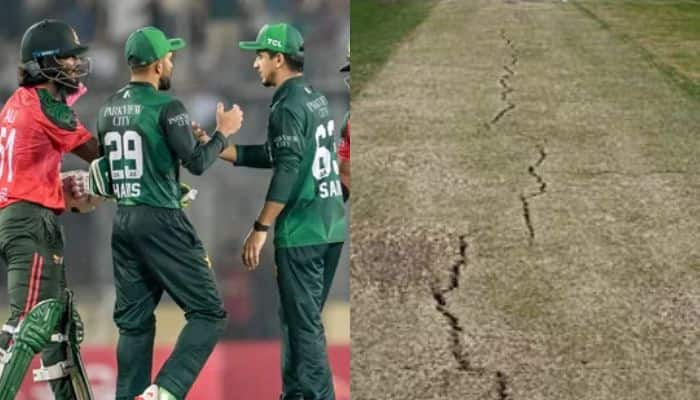In a match that exposed more cracks in Pakistan’s T20 armour than the pitch they criticized, the visitors succumbed to a humbling 7-wicket loss against Bangladesh in the 1st T20I at the Shere Bangla National Stadium. But instead of owning up to a dismal batting effort that saw them bundled out for just 110, Pakistan’s post-match narrative turned sharply toward the condition of the surface.
Mike Hesson Slams the Pitch, But the Scoreboard Tells a Different Story
Pakistan head coach Mike Hesson didn’t mince words in the post-match press conference, branding the Dhaka pitch as “not up to international standards.” The former New Zealand coach, tasked with guiding Pakistan through a crucial build-up phase ahead of the T20 World Cup 2026 and Asia Cup 2025, insisted that conditions like these do not help any team in preparation.
“This pitch is not acceptable. It’s not ideal for anybody, especially teams preparing for global events,” Hesson said. “Yes, we made poor decisions with the bat, but a surface like this doesn’t help develop international-level cricket.”
His comments came after Pakistan were blown away by a lethal spell of pace bowling. Taskin Ahmed (3/22) and Mustafizur Rahman (2/6) exposed Pakistan’s middle-order vulnerabilities, triggering a collapse that left the visitors gasping for air.
Fakhar Zaman Shines Amid Chaos, But Support Fails to Materialize
Amid the ruins, Fakhar Zaman stood tall with a composed 44 off 34 balls. His aggressive yet calculated knock offered a glimmer of hope, but with no meaningful partnerships and a lack of intent from the other end, Pakistan’s innings crumbled by the 19th over.
The inability to adapt to the surface, assess conditions, and rotate strike effectively highlighted deeper batting issues than just a troublesome pitch. Despite Hesson’s frustrations, the reality is Pakistan fell short of both application and execution.
Bangladesh’s response was clinical and confident. Parvez Hossain Emon, who scored a scintillating 56* off 39 balls, dismissed the pitch talk with his bat. Opening the innings with intent, Emon found gaps, played with soft hands, and punished anything loose.
“We didn’t feel it was a bad pitch. We chased it in under 16 overs. It’s about assessing the wicket quickly, and we did that better,” Emon remarked after bagging the Player of the Match award.
Bangladesh chased down the 110-run target in just 15.3 overs, losing only three wickets and showcasing their growing maturity in T20 cricket.
A Lesson in Adaptability: Bangladesh Outthink and Outplay Pakistan
What stood out was Bangladesh’s ability to read conditions and tailor their game plan accordingly. While Pakistan looked confused and rushed, the home side was methodical and calm. From bowling changes to field placements, Bangladesh’s execution was precise, reflecting a team comfortable in their own backyard and steadily growing in confidence on the global stage.
With Taskin and Mustafizur using the conditions intelligently—mixing cutters, seam movement, and cross-seam deliveries—Pakistan’s batting frailties were laid bare.
Pitch or Performance? The Real Questions for Pakistan
While Hesson’s criticism of the pitch might hold some merit, especially in the broader context of preparing players for overseas tours, it cannot mask the reality of Pakistan’s lackluster batting, poor shot selection, and visible mental disconnect.
His own admission—that “this still doesn’t excuse the decisions we made with the bat”—perhaps tells the truer story. Whether it was the unpredictable bounce or the scoreboard pressure, Pakistan’s meltdown was as much psychological as it was technical.
What’s Next: Redemption or Repeat in Game 2?
With the second T20I scheduled for Tuesday, July 22 at the same venue, all eyes will be on how Pakistan responds. Will they adjust to the surface, plug the middle-order leaks, and finally find rhythm ahead of two major tournaments? Or will the pitch become the scapegoat once again?
For Bangladesh, the task is simpler: stick to the plan, stay grounded, and seal the series with another commanding show in Dhaka.

